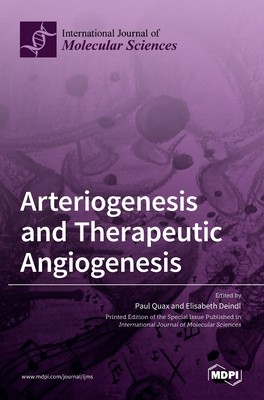
- We will send in 10–14 business days.
- Publisher: MDPI AG
- ISBN-10: 3036527168
- ISBN-13: 9783036527161
- Format: 17 x 24.4 x 1.9 cm, hardcover
- Language: English
- SAVE -10% with code: EXTRA
Arteriogenesis and Therapeutic Angiogenesis (e-book) (used book) | bookbook.eu
Reviews
Description
Although advances in therapeutic interventions improved outcomes, vascular occlusive diseases are still challenging not only afflicted but also attending physicians, requiring novel therapeutic strategies. Arteriogenesis, sometimes also called therapeutic angiogenesis, refers to the body's own capacity to create a natural bypass around a narrowing or occluded arterial vessel. This book gives an insight into current knowledge and advances in vascular sciences and future prospects of therapeutic options. The utility and relevance of circulating biomarkers together with the potential of machine learning methods are discussed as well as the challenges and prospects of novel therapies such as protein- gene-, and stem cell therapy along with multicistronic multigene vectors and the use of microRNAs, exosomes, and secretomes. Vascular smooth muscle phenotype switch as a target to promote arteriogenesis is critically addressed, highlighting the problem of promoting atherosclerosis in parallel. Two articles even deal with cold-inducible RNA-binding protein CIRP/CIRPB presenting it as promising target to promote vascularization concomitant the reduction in ischemic tissue damage. BMPR kinase inhibition is introduced to improve tissue repair in a hereditary form of vascular disorder, and the role of the AP-1 transcription factor JunB in blood vessel formation is described. Some more experimental oriented articles deal with the relevance of choosing the appropriate mouse strain for investigations as well as in vitro Matrigel plug assay as a potent method to investigate angiogenesis. Last but not least, two-photon intravital microscopy is presented as suitable tool to assess plaque angiogenesis in atherosclerotic lesions.
EXTRA 10 % discount with code: EXTRA
The promotion ends in 15d.14:16:49
The discount code is valid when purchasing from 10 €. Discounts do not stack.
- Publisher: MDPI AG
- ISBN-10: 3036527168
- ISBN-13: 9783036527161
- Format: 17 x 24.4 x 1.9 cm, hardcover
- Language: English English
Although advances in therapeutic interventions improved outcomes, vascular occlusive diseases are still challenging not only afflicted but also attending physicians, requiring novel therapeutic strategies. Arteriogenesis, sometimes also called therapeutic angiogenesis, refers to the body's own capacity to create a natural bypass around a narrowing or occluded arterial vessel. This book gives an insight into current knowledge and advances in vascular sciences and future prospects of therapeutic options. The utility and relevance of circulating biomarkers together with the potential of machine learning methods are discussed as well as the challenges and prospects of novel therapies such as protein- gene-, and stem cell therapy along with multicistronic multigene vectors and the use of microRNAs, exosomes, and secretomes. Vascular smooth muscle phenotype switch as a target to promote arteriogenesis is critically addressed, highlighting the problem of promoting atherosclerosis in parallel. Two articles even deal with cold-inducible RNA-binding protein CIRP/CIRPB presenting it as promising target to promote vascularization concomitant the reduction in ischemic tissue damage. BMPR kinase inhibition is introduced to improve tissue repair in a hereditary form of vascular disorder, and the role of the AP-1 transcription factor JunB in blood vessel formation is described. Some more experimental oriented articles deal with the relevance of choosing the appropriate mouse strain for investigations as well as in vitro Matrigel plug assay as a potent method to investigate angiogenesis. Last but not least, two-photon intravital microscopy is presented as suitable tool to assess plaque angiogenesis in atherosclerotic lesions.


Reviews